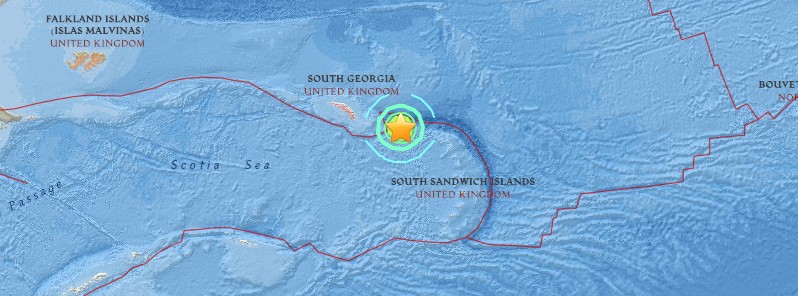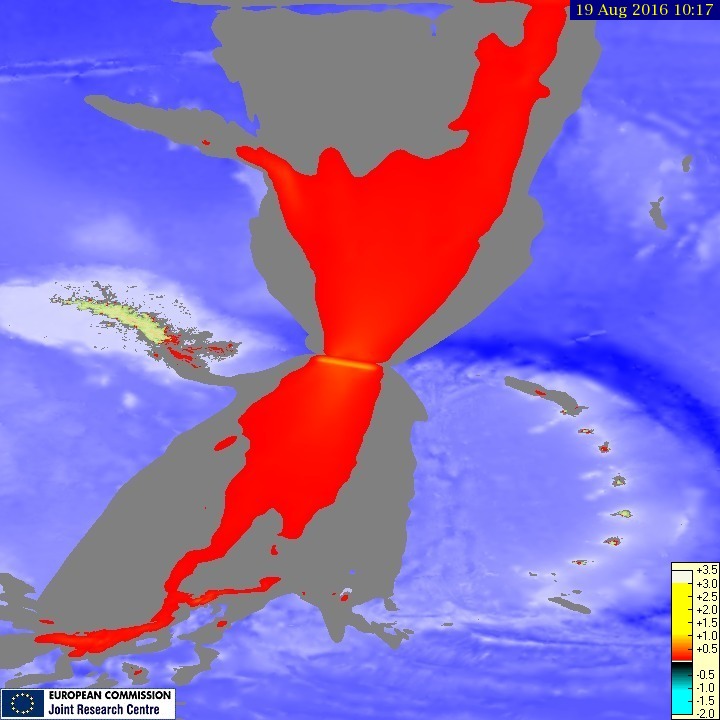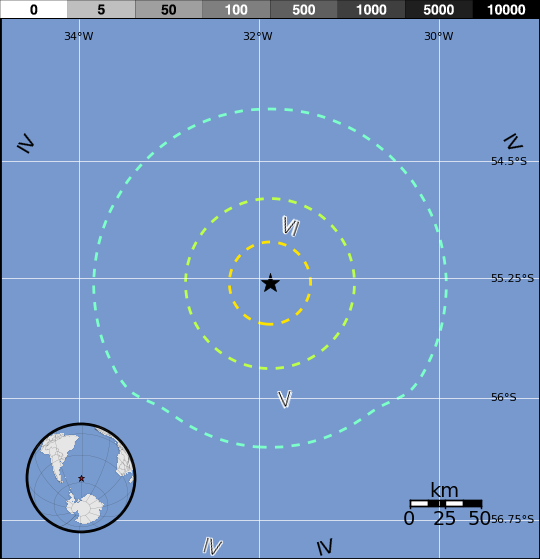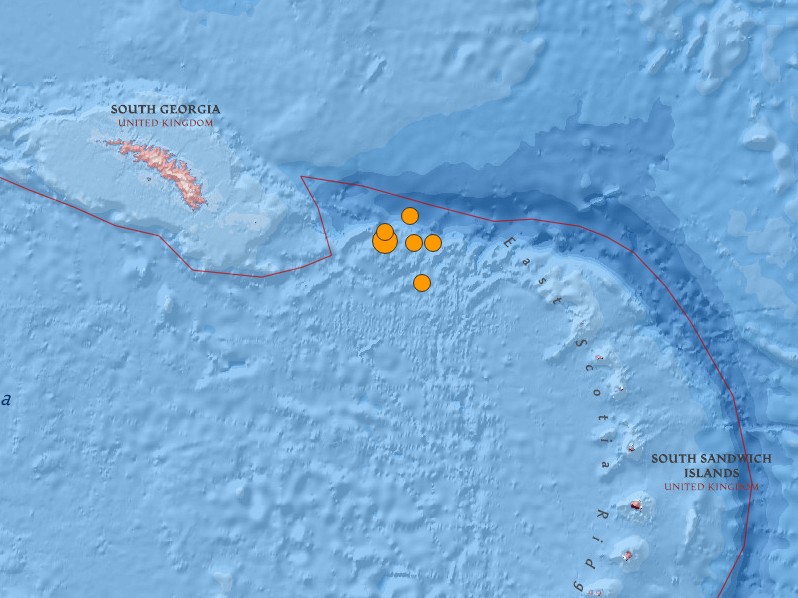Very strong and shallow M7.4 earthquake hits South Georgia island region

A very strong and shallow earthquake registered by the USGS as M7.4 hit South Georgia island region at 07:32 UTC on August 19, 2016. The agency is reporting a depth of 10 km (6.2 miles).
The epicenter was located about 261 km (162 miles) W of South Georgia, 293 km (182 miles) NNE of Zavodovski Island, and 2 300 km (1 429 miles) E of Río Grande, Argentina.
There are no people living within 100 km (62 miles).
Earthquakes of this size are known to generate tsunamis dangerous to shorelines near the source, NWS NTWC said.

Tsunami maximum wave height. Credit: JRC
Source: JRC
USGS issued a green alert for shaking-related fatalities and economic losses. There is a low likelihood of casualties and damage. There are likely to be no affected structures in this region.
Estimated population exposure to earthquake shaking

The quake occurred as the result of shallow thrust faulting near the plate boundary between the South America and Scotia plates, the USGS said.
In this region, the South America plate subducts to the west-southwest beneath the Scotia Plate and the South Sandwich Island Arc, mainly south and east of the epicenter of todays quake along the South Sandwich Trench. To the west of this event, near South Georgia Island, the Scotia-South America plate boundary is represented by the North Scotia Ridge, a left-lateral transform fault.
At the location of this earthquake, the South America plate moves towards the west-southwest with respect to the Scotia plate at a rate of just 9 mm/yr. Rates of subduction along the South Sandwich Trench are in excess of 65 mm/yr, but slow in the region of the August 19th earthquake due to back-arc spreading along the East Scotia Ridge, just east of this event. The focal mechanism solution of this earthquake indicates southwest-oriented thrust faulting, consistent with occurring along the plate boundary interface between the South America and Scotia Sea (and South Sandwich micro-) plates.
While commonly plotted as points on maps, earthquakes of this size are more appropriately described as slip over a larger fault area. Thrust faulting events of the size of the August 19, 2016 earthquake are typically about 70×35 km in size (length x width).
While the South Sandwich Arc subduction zone is active seismically, all moderate-to-large historic events have occurred east of the East Scotia Ridge, >~130 km to the east of the August 19 earthquake. 23 such earthquakes of M 6+ have occurred within 250 km of the August 19 event over the preceding century. These include a M 8.1 earthquake in June 1929, 160 km to the east of the August 19 event, and more recently, two M 6.9 events in September 2004 and June 2014, between 190-230 km to the east. Both of these 21st century events demonstrated oblique-thrust faulting, consistent with South America subduction.
Due to the remote location of these events far from population centers that might be vulnerable to earthquake shaking, none are known to have recorded casualties or damage. (USGS)
USGS registered 5 aftershocks by 08:32 UTC:

Image credit: USGS
-
5.0
274km WNW of Visokoi Island, South Georgia and the South Sandwich Islands
2016-08-19 08:32:51 (UTC)
-
5.2
296km WNW of Visokoi Island, South Georgia and the South Sandwich Islands
2016-08-19 08:21:02 (UTC)
-
5.2
260km WNW of Visokoi Island, South Georgia and the South Sandwich Islands
2016-08-19 08:13:36 (UTC)
-
5.2
South Georgia Island region
2016-08-19 07:54:53 (UTC)
-
5.3
South Georgia Island region
2016-08-19 07:46:40 (UTC)
-
7.4
South Georgia Island region
2016-08-19 07:32:22 (UTC)
Featured image credit: USGS

Commenting rules and guidelines
We value the thoughts and opinions of our readers and welcome healthy discussions on our website. In order to maintain a respectful and positive community, we ask that all commenters follow these rules.